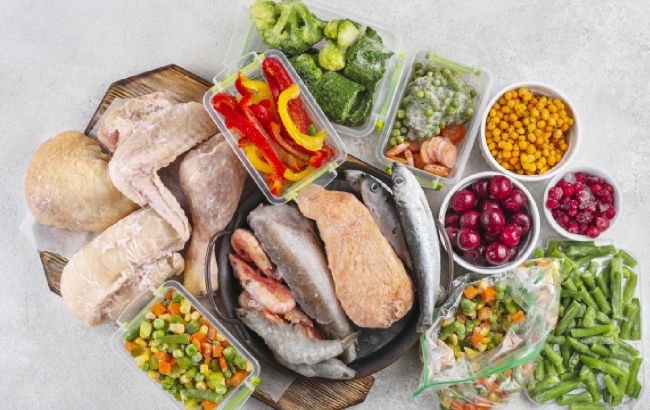6 mistakes in storing products that can lead to poisoning
 How to store food properly (photo: Freepik)
How to store food properly (photo: Freepik)
Proper food storage is not only one of the best ways to save money and reduce waste but also a crucial aspect in preventing food poisoning. However, there are some common, not always obvious, mistakes that are quite common.
Martha Stewart tells about the most common mistakes in storing products.
Storing fresh fruits and vegetables in the refrigerator
Although there may be a temptation to wash fruits and vegetables before storing them in the refrigerator, this is not the best way to extend their shelf life.
According to the US Department of Agriculture, it is best to wash produce just before you are ready to eat or cook it.
This is because moisture promotes the growth of microorganisms such as bacteria and mould, even at cool temperatures in the refrigerator, and water washes away the protective film.
Therefore, fruits and vegetables are recommended to be stored in their original packaging or transferred to another container, depending on the type of product.
Storing products without packaging
Some microorganisms (such as mould and yeast) can thrive at low temperatures in the refrigerator, where they can circulate in the air and land on unwrapped food or food not in a container.
Moreover, air exposure can also accelerate the chemical breakdown of aromatic compounds in the products. Also, products can quickly absorb odors from the refrigerator.
In the freezer, the growth of microbes is usually impossible, but if frozen products are not covered, they will slowly react with the oxygen in the air and acquire an unpleasant odour, and their surface will dry out due to the influence of oxygen.
Placing eggs in the refrigerator door
Some refrigerators have a special egg tray in the door. However, it is not recommended to use it – storing eggs in this location can pose a food safety risk.
When the door is opened – which happens frequently – the temperature of the eggs rises. This causes them to enter a danger zone where bacteria, such as Salmonella, can multiply quickly. The best place to store eggs is at the back of the shelf.
Storing leftovers for too long
Leftovers can save time on busy evenings, especially if you are cooking for several people. But contrary to popular belief, properly storing leftovers in the refrigerator does not mean they will last long.
According to experts, after three to four days, the number of microorganisms multiplying in freshly prepared food becomes quite high.
Moreover, it is not always possible to determine if the food contains harmful microorganisms, as these microbes do not change its appearance, color, or texture, according to the US Department of Agriculture.
Not labeling containers
Labeling food is one of the simplest ways to ensure that you consume it within the recommended time frame. Many people rely on their memory to determine when something was opened or prepared, but it is easy to forget in the fast pace of life.
By labeling products before placing them in the refrigerator, freezer, or pantry, you will find it easier to use them before they spoil. This way, labeling helps reduce the risk of foodborne illnesses and decreases waste in the kitchen.
Choosing the wrong shelf in the refrigerator
Another common mistake in food storage is placing items on the wrong shelves. If products are stored in the wrong spot in the refrigerator, juices from raw meat or fish can drip onto other foods, potentially spreading harmful bacteria.
For instance, raw meat can contain microbes like Salmonella or E. coli, which are usually destroyed during cooking.
However, if these pathogens spread to other products (e.g., a raw salad), they can pose a risk of food poisoning.
Therefore, it is recommended to store raw meat or fish on a shelf below where ready-to-eat foods are kept. For an additional level of safety, use containers with raised edges for raw meat to prevent juices from spreading.

